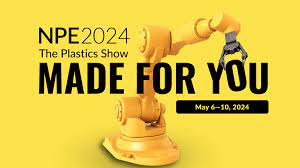THIS INTERNATIONAL ON DEMAND SUMMIT IS AN INDUSTRY… More
The Mexican automotive industry with growth opportunities, despite the chips shortage
Despite the crisis generated by the COVID-19 pandemic, the shortage of components and microprocessors for vehicle production, Mexico continues to offer competitive advantages compared to other countries, in addition to being one of the main manufacturing hubs worldwide, said Francisco Bautista, Ernst & Young (EY) Latin America North Advanced Manufacturing and Mobility Lead Partner.
During the press conference on the"Perspective of the Automotive Industry in Mexico", the specialist said that 27% of the GDP comes from advanced manufacturing, 90% of the manufacturing industry represents exportable value and generates 4.3 million jobs.
As a consequence of the current uncertain environment, domestic manufacturing companies in Mexico are showing a contraction in their investment plans. Nevertheless, in 2021, manufacturing in the country grew approximately 16.3% and continues to offer competitive advantages compared to other countries; for example, competitive production and labor costs, proximity to the United States and Canada, attractive export programs and the T-MEC. It is worth noting that the six entities that contribute the highest percentage of manufacturing GDP are Coahuila, Querétaro, Estado de México, Aguascalientes, Guanajuato, Puebla and San Luis Potosí.
Francisco Bautista pointed out that there are also risks, such as the high dependence on exports with the United States, the lack of skilled labor and the reduction in domestic demand. "Inflation of 7% undoubtedly represents an impact on supply and demand in the automotive industry, as well as other consequences such as pressures in the supply chain due to shortages of microprocessors. On the one hand, the impact on supply is reflected in the increase in the cost of inputs and labor, shortages of inputs and increased transportation costs. On the other hand, the impact on demand (domestic sales and exports) can be seen in higher vehicle prices, higher interest and credit rates, as well as changes in consumer preferences (hybrid and electric vehicles)," he explained.
He also said that the COVID-19 pandemic caused a shortage of semiconductors for the automotive industry, which has caused limitations in the supply chain, including the paralyzation of production.
He indicated that this shortage will have short, medium and long term consequences for the industry; for example, in the short term, automakers around the world have temporarily halted or slowed vehicle production. Meanwhile, in the medium term, operators in the value chain will have to undertake initiatives to combat the imbalance between supply and demand.
Finally, in the long term, alternative supply for semiconductor requirements will have to be considered, as the imbalance between supply and demand, coupled with the geopolitical situation, becomes a concern for the main markets.
"Automakers will need to collaborate with foundries to improve capacity visibility. In addition, the automotive industry will have to re-evaluate its supply chain, inventories and internal capabilities to avoid a similar crisis in the future," Bautista added.
Pressure on inputs for the automotive industry.
Lithium
-- Ion: the increase in demand for electric vehicles will continue to generate pressure to increase production.
Semiconductors: just-in-time model generated a gap in production. The automotive terminal industry will have to reevaluate its purchasing model, inventories, supply chain and internal production capacities.
Steel: pressures to increase production and reduce tariff restrictions will continue to be a priority. Steel companies are looking to reduce carbon emissions.
Aluminum: Aluminum prices are at their highest level in the last 10 years. Demand and supply chain challenges will continue to generate pressures in the short and medium term.
During the press conference on the"Perspective of the Automotive Industry in Mexico", the specialist said that 27% of the GDP comes from advanced manufacturing, 90% of the manufacturing industry represents exportable value and generates 4.3 million jobs.
As a consequence of the current uncertain environment, domestic manufacturing companies in Mexico are showing a contraction in their investment plans. Nevertheless, in 2021, manufacturing in the country grew approximately 16.3% and continues to offer competitive advantages compared to other countries; for example, competitive production and labor costs, proximity to the United States and Canada, attractive export programs and the T-MEC. It is worth noting that the six entities that contribute the highest percentage of manufacturing GDP are Coahuila, Querétaro, Estado de México, Aguascalientes, Guanajuato, Puebla and San Luis Potosí.
Francisco Bautista pointed out that there are also risks, such as the high dependence on exports with the United States, the lack of skilled labor and the reduction in domestic demand. "Inflation of 7% undoubtedly represents an impact on supply and demand in the automotive industry, as well as other consequences such as pressures in the supply chain due to shortages of microprocessors. On the one hand, the impact on supply is reflected in the increase in the cost of inputs and labor, shortages of inputs and increased transportation costs. On the other hand, the impact on demand (domestic sales and exports) can be seen in higher vehicle prices, higher interest and credit rates, as well as changes in consumer preferences (hybrid and electric vehicles)," he explained.
He also said that the COVID-19 pandemic caused a shortage of semiconductors for the automotive industry, which has caused limitations in the supply chain, including the paralyzation of production.
He indicated that this shortage will have short, medium and long term consequences for the industry; for example, in the short term, automakers around the world have temporarily halted or slowed vehicle production. Meanwhile, in the medium term, operators in the value chain will have to undertake initiatives to combat the imbalance between supply and demand.
Finally, in the long term, alternative supply for semiconductor requirements will have to be considered, as the imbalance between supply and demand, coupled with the geopolitical situation, becomes a concern for the main markets.
"Automakers will need to collaborate with foundries to improve capacity visibility. In addition, the automotive industry will have to re-evaluate its supply chain, inventories and internal capabilities to avoid a similar crisis in the future," Bautista added.
Pressure on inputs for the automotive industry.
Lithium
-- Ion: the increase in demand for electric vehicles will continue to generate pressure to increase production.
Semiconductors: just-in-time model generated a gap in production. The automotive terminal industry will have to reevaluate its purchasing model, inventories, supply chain and internal production capacities.
Steel: pressures to increase production and reduce tariff restrictions will continue to be a priority. Steel companies are looking to reduce carbon emissions.
Aluminum: Aluminum prices are at their highest level in the last 10 years. Demand and supply chain challenges will continue to generate pressures in the short and medium term.
Demand and challenges to supply chains will continue to generate pressures in the short and medium term.
Related Articles:

Source:
Recent News
POSTED ON

























